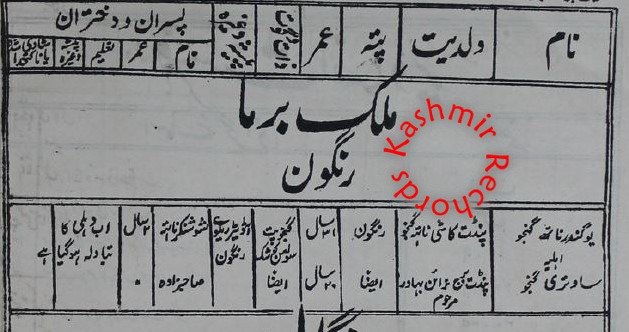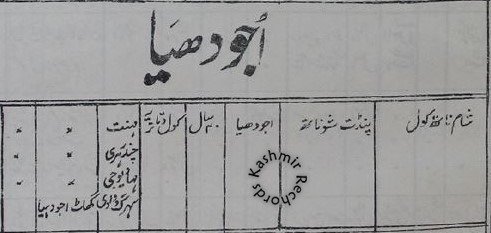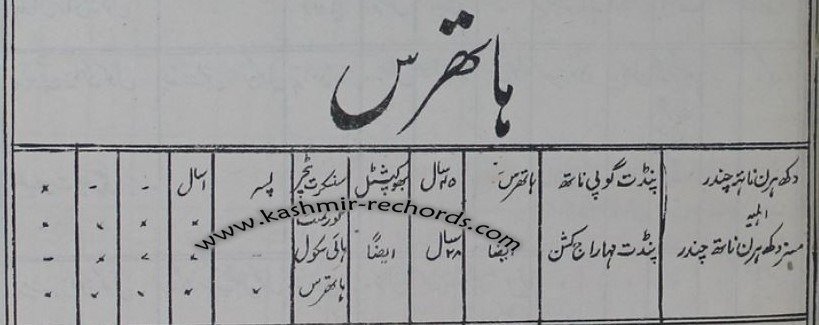(Kashmir Rechords Exclusive)
Ever heard of a Kashmiri Pandit family residing in Rangoon—now known as Yangon, the largest city and former capital of Burma (Myanmar)? If not, here’s a fascinating piece of history documented in a rare directory compiled in Urdu by the Kashmiri Pandit Association of Delhi between 1925 and 1935, later published in 1936.
This directory is more than just a record—it is a treasure trove of historical insights. It chronicles the migration of Kashmiri Pandits as early as the 17th century, mapping their presence in 118 cities and towns across the Indian subcontinent. Kashmir Rechords has extensively covered some portion of this remarkable document, bringing forth lesser-known facts about the dispersed Kashmiri Pandit community.
Beyond the Myth: Kashmiri Pandits in Unseen Struggles
One of the most compelling revelations from the 1936 Directory is that not all Kashmiri Pandits who left their homeland secured high-ranking posts or prosperous careers. While some did rise to prominence, many found themselves scattered across unfamiliar lands, taking up modest jobs for survival. From working in agriculture to manual labour, their journey defies the conventional perception of Kashmiri Pandits as solely occupying elite positions in British India.

The Lone Kashmiri Pandit Family in Rangoon
Among those documented was the family of Kashi Nath Ganjoo, the only Kashmiri Pandit family residing in Rangoon. His son, Yoginder Nath Ganjoo, 31, worked as an auditor for the Railways. He was married to Savitri, 20, daughter of late Brij Narayan Bahadur Ganjoo. The couple had two children—a two-year-old son, Shiv Shanker Nath, and a newborn whose ‘naamkaran’ (naming ceremony) was yet to be performed. In 1936, Yoginder was, however, transferred to Delhi, leaving behind his father, Kashi Nath Ganjoo, in Rangoon.
A Community Dispersed Far and Wide
The unique Directory unveils the widespread presence of Kashmiri Pandits beyond well-known cities like Lahore, Karachi, Jodhpur, Rawalpindi, Sialkot, Calcutta, Lucknow and Hyderabad. Their footprints extended to then lesser-prominent towns such as Aara (Bihar), Hathras (UP), Ayodhya, Chapra, Jhang, Jehlum, Sargodha, Sheikhupura, Ajmer, Almora, Alwar, Udaipur, Bharatpur, Chittor, Ujjain, Indore, Rewa, Amravati and even Bilaspur-Raipur.

At Ayodhya, a young man named Sham Nath Kaul, 20, son of Pt. Shiv Nath, worked as a labourer at Chanderhari, Mahadevji Swargwadi Ghat. At Hathras, Dukhnarayan Nath Chandra, 45, son of Gopinath, served as a Sanskrit teacher at the Government High School. Meanwhile, in Faizabad, Tej Krishan Ganjoo toiled in the fields to make ends meet.

Preserving a Vanishing Legacy
The 1936 directory serves as an irreplaceable historical document, preserving stories of resilience, struggle and adaptation. It offers a rare glimpse into the lives of Kashmiri Pandits who ventured beyond their homeland, some in search of opportunities, others driven by necessity.
For those interested in exploring more about this unique directory, here are some previously covered stories by Kashmir Rechords:
- Kashmiri Pandits’ Unique Directory of 1936
Read here - A Kashmiri Pandit Who Shaped Lahore’s Administration
Read here - A Forgotten Kashmiri Pandit Temple in Pakistan’s Gujrat
Read here
Based on this extraordinary directory, Kashmir Rechords will continue to unearth lost narratives of Kashmiri Pandits, reshaping our understanding of their diasporic existence.

